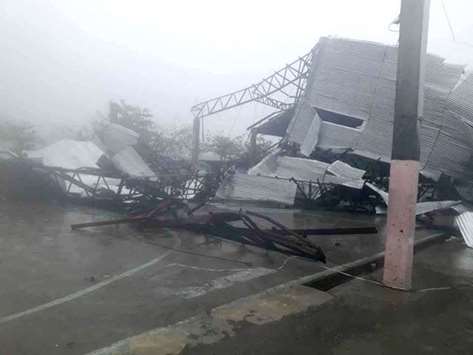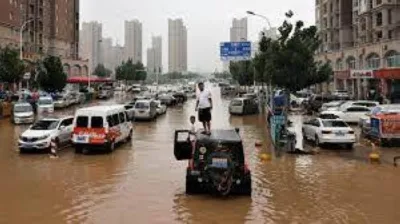More than 4mn people were left without electricity as Mangkhut, the strongest typhoon to hit the Philippines so far this year, knocked down electricity and communication lines.
The death toll would “probably still go up,” said Ricardo Jalad, executive director of the National Disaster Risk Reduction and Management Council, noting that reports of damage caused by Mangkhut were trickling in as emergency teams were able to reach battered areas.
Two of the victims were miners helping in rescue operations in one of two landslides in Itogon town in Benguet province, 198 kilometres north of Manila, where a 13-year-old child also died, said town Mayor Victorio Palandan.
A family of four, including an eight-month-old baby and a two-year-old child, were killed when their house was buried in a landslide in Kayapa town in Nueva Vizcaya, said Governor Carlos Padilla.
Five people also died in separate landslides in nearby Baguio City, according to Mayor Mauricio Domogan.
Five were also missing, he added.
In the Manila suburban city of Pasig, the body of a teenage girl was recovered from under a bridge in the swollen Marikina River, police said.
Mangkhut made landfall over Baggao town in Cagayan province, 382 kilometres north of Manila, at 1:40 am (1740 GMT Friday), lashing the province and nearby areas with maximum winds of 205 kilometres per hour and gusts of up to 285 km/h.
It exited the country at 9 pm (1300 GMT today), with winds down to 160km/h and gusts of up to 195km/h, the weather bureau said.
The typhoon, the strongest to hit the Philippines so far this year, was headed towards southern China or Hong Kong, it added.
The weather bureau warned of “continuing hazards” from floods, storm surges and landslides, noting that the typhoon’s wide raincloud band would still bring heavy rains over the country.
More than 151,000 residents have been forced to flee their homes in the affected communities, especially coastal areas, according to the risk reduction council.
Seven provinces with more than 4.4mn residents were without electricity due to Mangkhut, which triggered dozens of landslides in the northern Cordillera region, including Benguet, the council added.
At least 28 roads and bridges were closed to traffic in the northern Philippines because of landslides, floods, fallen trees or toppled lamp posts, said Ruben Carandang, a regional civil defence director.
Mangled iron sheets, shattered glass, cut-off wires and other debris littered many streets in the affected areas, local news footage and photos on social media showed.
In the city of Tuguegarao in Cagayan province, the roof of the provincial city hall was torn off, and many houses made from light materials were destroyed.
At Tuguegarao airport, windows were shattered and ceilings collapsed, damaging X-ray machines and computers, according to Transport Secretary Arthur Tugade, who was among several cabinet members deployed to the affected areas.
At least 182 domestic and international flights have been cancelled, while nearly 5,000 people were stranded in various ports throughout the country after sea travel was prohibited.
The Philippines is hit by an average of 20 cyclones every year, causing floods, landslides and other accidents.
One of the strongest in recent memory, Typhoon Haiyan, hit the country in November 2013, killing more than 6,300 people and displacing more than 4mn.



